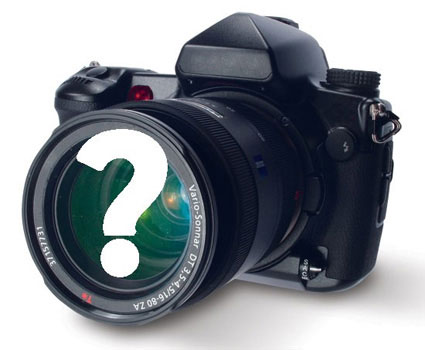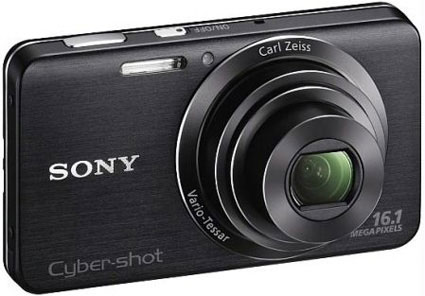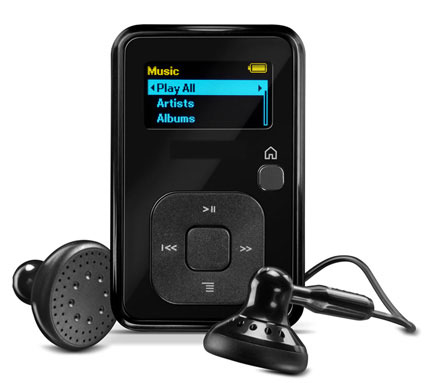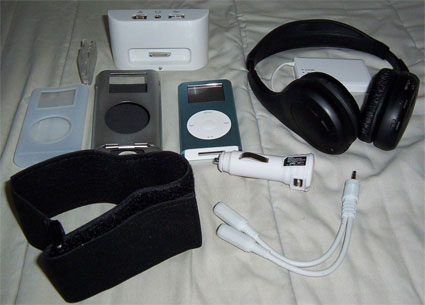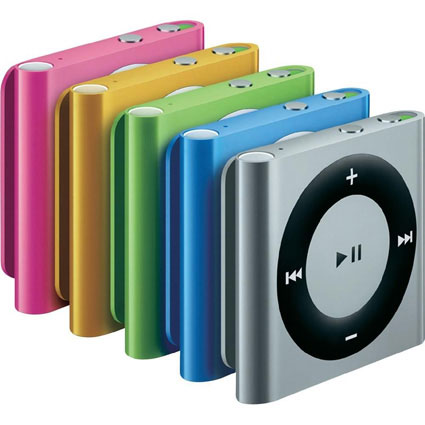Planningonbuyingyourfirstdigitalcameratorecordthosehappymoments?Learnhowtomakeyourselection.InthisarticleWhattoconsiderbeforechoosingadigitalcameraWhattolookforwhenchoosingtheamountofmegapixelsWhattolookforinapointandshootdigitalcameraWhattolookforinabridge/prosumercameraWhattolookforinadigitalSLRWhattoconsiderbeforechoosingadigitalcameraAsanewparent,oneofthemostessentialthingswewishtodoistocapturethetimelessmemoriesofourchildrengrowingup.Fromthefirsttimetheystartedtowalk,tothatmemorableoutingatthezoo.Tilldateyouragingfilmcamerahassuitedyourneedswell,butnowyourealisethatthedigitalrevolutioniscatchingupandthecostofdevelopingfilmseemstobeescalating.Nowwouldbetheidealtimetoswapyourfilmcameraforitsdigitalcounterpart.Thefirstquestiontoconsideriswhatkindofcamerayouareseekingtoreplace.Eachfilmcamera,rightfrompointandshoottoSingleLensReflex(SLR)hasadigitalcounterpart.Digitalcamerasbringanewrangeofcamerastotheconsumercalledbridgeorprosumer(hybridofprofessionalandconsumer)cameras.ThesecamerasofferfeaturesthatadvancedSLRcamerasofferbutdonothavethechangeablelenscapabilitiesofanSLR.Dependinguponyourinterestandneed,youhavetofirstidentifyyourrequirements.Forafastsolution,apointandclickcamerawilldo.Foradditionalcontroloverhowthephotoiscomposed,investinabridgeorprosumercamera.Finally,ifyouareintoprofessionalphotographyorrequirehighresolutioncamerasthenadigitalSLRcameraisrecommended.WhattolookforwhenchoosingtheamountofmegapixelsMegapixelsaredotsofinformationonaphotograph.Themoremegapixelsacamerahas,themoreitiscapableofgeneratinglarger-sizedpictures.Thisisimportantwhentakingprintoutsofyourphotos.A3-megapixelcamerawillbeabletogenerateaclear5X7inchprintwhilea7-megapixelcamerawillcomfortablybeabletogiveyouan8X10inchprint.WhattolookforinapointandshootdigitalcameraThepointandshootcameraisthesimplestdigitalcameratochoosefrom.Animportantaspectofchoosingapointandshootdigitalcameraisselectingacamerathatfitswellinyourhand.Mostpointandshootcamerasemphasiseontheslimformfactor.Thebenefitofpointandshootcamerasistheirgoodmacrocapabilitybundledinsuchasmalllens.Thismeansthatthecameracantakeextremecloseups.Mostpointandshootcameraswillcomeincludedwithamacromode.Thedisadvantageofusingapointandshootcameraistheinabilitytoactuallycontrolhowtheimageismade.Theuserdoesnothaveaccesstosettingssuchasapertureandshutterspeed.Anotherdrawbackisthatthesecamerasaredifficulttoholdandwithminiaturebuttonsandnoeasyhandgrip.Thismeanstheytendtoinduceacamerashake,blurringthephotographs.Thisisevenmorepronouncedinthenighttimeorinlowlightsituations.Buyacamerawithanopticalzoomthatmeetsyourrequirementsandyourpurse.Avoiddigitalzoomastheresultswillnotbeasclearastheopticalzoomresult.Somepointandshootcamerascomewiththecapabilityofbeingabletoattachtoacomputerorprinterdock.ThisallowsyoutoeithereasilytransferphotosfromcameratoyourPCordirectlytakeprintoutswhenconnectingthedocktoaprinter.Thepointandshootcameraistheidealsolutionyouwanttodocumentthosepreciousfleetingfamilymoments.Youshouldsettleonacamerathatiseasytoholdandtakesphotosofasizethatisacceptabletoyou.Itshouldmeetyourbudgetaswell.Whattolookforinabridge/prosumercameraWhenchoosingabridgecamera,lookforacamerathathasazoomlensthatsuitsyourneeds.Alsoconsidercamerasthathavethecapacitytoextendtherangeofthelenswithadd-onlenses.Thisusuallymeanslookingforcamerasthathaveanadd-onlensring.Lookatthenumberofmodesthatthecameraoffers.Amodeisaspecificpresetsettingthatallowsausercertainoption.Commonmodesinaprosumercameraincludeamodeforaperturecontrolandamodeforshuttercontrol.Howmuchmanualsupportwillyoubeabletohaveintermsoffocus,aperturesize,andshutterspeed?Lookatthelightmeteringsystemthatthecameraoffers.Alightmeteringsystemcalculateshowmuchlightisfallingontheareainfocusandhowtocompensateforit.Somelightmeteringsystemsincludespotmetering,aswellasaverageandareametering.Bridgecamerasevenofferaddedfeaturessuchasshootingvideoandrecordingaudionotes.WhattolookforinadigitalSLRAdigitalSLRcamerashouldofferthecustomerawidevarietyofmanualsettingssuchasaperturesize,shutterspeed,ISOspeed,etc.TherearetwotypesofdigitalSLRsavailable.YouhavethefixedlensSLRs,wherethelenscannotberemoved,andnormalSLRs,whichallowyoutointerchangelenses.Thelatterwouldenableyoutoupgradethelensinthefuture.Customersshouldalsotakeintoconsiderationthetimeittakesforthecameratoautofocus,timetakentostartup,theamountofinformationprovidedinthecamerasviewfinderandtheoverallergonomicsbeforesettlingonacamera.Whenchoosingyourcamera,thinkabouthowmanyfamilymembersaregoingtouseyourcamera.AdigitalSLRisunlikelytobeusablebyeverymemberofthefamily,whileapointandshootorbridgecameramaybemoreideal.Thinkofthecostandthenumberoftimesyouarelikelytousethecamerabeforefinallysettlingonthemodelofyourchoice.
Planning on buying your first digital camera to record those happy moments? Learn how to make your selection. What to consider before choosing a digital camera
As a new parent, one of the most essential things we wish to do is to capture the timeless
memories of our children growing up. From the first time they started to walk, to that memorable outing at the zoo. Till date your aging film camera has suited your needs well, but now you realise that the digital revolution is catching up and the cost of developing film seems to be escalating.
Now would be the ideal time to swap your film camera for its digital counterpart. The first question to consider is what kind of camera you are seeking to replace. Each film camera, right from point and shoot to Single Lens Reflex (SLR) has a digital counterpart. Digital cameras bring a new range of
cameras to the consumer called bridge or 'prosumer' (hybrid of professional and consumer) cameras. These cameras offer features that advanced SLR cameras offer but do not have the changeable lens capabilities of an SLR. Depending upon your interest and need, you have to first identify your requirements. For a fast solution, a point and click camera will do. For additional control over how the photo is composed, invest in a bridge or prosumer camera. Finally, if you are into professional photography or require high resolution cameras then a digital SLR camera is recommended.
What to look for when choosing the amount of megapixels
Megapixels are dots of information on a photograph. The more megapixels a camera has, the more it is capable of generating larger-sized pictures. This is important when taking printouts of your
photos. A 3-megapixel camera will be able to generate a clear 5 X 7 inch print while a 7-megapixel camera will comfortably be able to give you an 8 X 10 inch print.
What to look for in a point and shoot digital camera
The point and shoot camera is the simplest digital camera to choose from. An important aspect of choosing a point and shoot digital camera is selecting a camera that fits well in your hand. Most point and shoot cameras emphasise on the slim form factor.
The benefit of point and shoot cameras is their good macro capability bundled in such a small lens. This means that the camera can take extreme close ups. Most point and shoot cameras will come included with a macro mode. The disadvantage of using a point and shoot camera is the inability to actually control how the image is made. The user does not have access to settings such as aperture and shutter
speed. Another drawback is that these cameras are difficult to hold and with miniature buttons and no easy handgrip. This means they tend to induce a camera shake, blurring the photographs. This is even more pronounced in the night time or in lowlight situations.
Buy a camera with an optical zoom that meets your requirements and your purse. Avoid digital zoom as the results will not be as clear as the optical zoom result.
Some point and shoot cameras come with the capability of being able to attach to a computer or printer dock. This allows you to either easily transfer photos from camera to your PC or directly take printouts when connecting the dock to a printer.
The point and shoot camera is the ideal solution you want to document those precious fleeting family moments. You should settle on a camera that is easy to hold and takes photos of a size that is acceptable to you. It should meet your
budget as well.
What to look for in a bridge / prosumer camera
When choosing a bridge camera, look for a camera that has a zoom lens that suits your needs. Also consider cameras that have the capacity to extend the range of the lens with add-on lenses. This usually means looking for cameras that have an add-on lens ring.
Look at the number of modes that the camera offers. A mode is a specific preset setting that allows a user certain option. Common modes in a prosumer camera include a mode for aperture control and a mode for shutter control. How much manual support will you be able to have in terms of focus, aperture size, and shutter speed? Look at the light metering system that the camera offers. A light metering system calculates how much light is falling on the area in
focus and how to compensate for it. Some light metering systems include spot metering, as well as average and area metering. Bridge cameras even offer added features such as shooting video and recording audio notes.
What to look for in a digital SLR
A digital SLR camera should offer the customer a wide variety of manual settings such as aperture size, shutter speed, ISO speed, etc. There are two types of digital SLRs available. You have the fixed lens SLRs, where the lens cannot be removed, and normal SLRs, which allow you to interchange lenses. The latter would enable you to upgrade the lens in the future. Customers should also take into consideration the time it takes for the camera to auto focus, time taken to start up, the amount of information provided in the camera's viewfinder and the overall ergonomics before settling on a camera.
When choosing your camera, think about how many family members are going to use your camera. A digital SLR is unlikely to be usable by every member of the family, while a point and shoot or bridge camera may be more ideal. Think of the cost and the number of times you are likely to use the camera before finally settling on the model of your choice.












